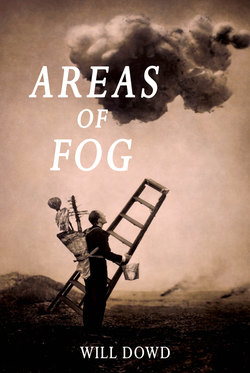Читать книгу Areas of Fog - Will Dowd - Страница 12
ОглавлениеIT’S ALWAYS THIS time of year—when the snowstorms have begun to bleed into each other and the air, just teething in December, now has real bite—that my pale Irish skin loses its ivory sheen and becomes actually translucent, and you can see my major organs quivering like koi fish under a layer of ice.
It was a week of slow, steady accumulation.
On Saturday, we had snowflakes the size of movie tickets. On Wednesday, they flew in our eyes like flicked ash. By Friday, every window in New England was like the frame of an Andrew Wyeth winter landscape.
Andrew Wyeth loved this time of year. The painter, who died five years ago this week, spent most of his life on long walks with his paper and sable brushes, trying to find the right snowbank to sit on.
“God, I’ve frozen my ass off painting snow scenes!” he once supposedly said.
It’s one thing to be a plein-air artist in the south of France, but anyone who shoveled their driveway this week has to respect a man who painted mittenless in this weather for decades.
For Wyeth, exposure to the elements was essential to his art. It got him out of his head. “When I’m alone in the woods, across these fields, I forget all about myself, I don’t exist,” he said. “I’d just as soon walk around with no clothes on.”
I used to think Wyeth chose his favorite subject—isolated barn in a sea of snow—mostly to save paint. Some of his finished watercolors are more than seventy percent untouched paper.
But the more I look at his wintry landscapes, the more they seem to take on an otherworldly glow. For Wyeth, the white space of winter was not a shortcut. It was a mystery.
“I prefer winter and fall, when you can feel the bone structure in the landscape—the loneliness of it,” the painter said. “Something waits beneath it—the whole story doesn’t show.”
This is especially true for “Snow Birds,” a Wyeth watercolor recently slated to be auctioned at Christie’s for $500,000.
Shortly before being sold, it was discovered to be a fake. (You can always expect a flurry of forgeries in the wake of an artist’s death.)
There are small details that give it away.
For example, Wyeth painted pine trees by laying down an undercoat of green, then trickling black branches over it—not the reverse, as seen in the fraud.
Also, the forger was too stiff in his brushwork. The shadows are labored; the hillside is stilted; even the signature is too neat. Wyeth, who painted with fingers that ached to be back in his warm pockets, was all speed and dash with his brushes.
No, this winter landscape was not painted by Andrew Wyeth. It was not painted by someone whose hands were cold.
